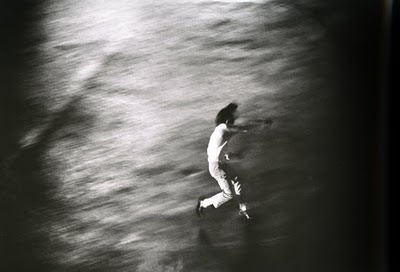The Barbican has always been one of my favourite 'feeding' spots in London and this winter is no different as the marvellous Everything was moving exhibition brings some of the most powerful photojournalism ever captured to the capital.
Covering a radical and tumultuous period of change during the 1960s and 1970s, and dedicating one room to each of the 12 photographers selected, the exhibition is a deliciously immersive experience, allowing visitors to survey each "personal landscape" in a given country. In fact, you could argue that reportage and the medium of photography really came of age during this period. The Cold War, Vietnam, civil rights in the US, apartheid in South Africa… The arts were at their most provocative in response, forcing everyone to confront reality.
What's interesting about the work of each exhibitor is the interplay between the external and the internal. Subjectivity and objectivity. From Bruce Davidson's stark and shocking account of Sixties' prejudice and persecution in the Deep South, to Raghubir Singh's moments of full-colour human warmth that illuminate India, or the dissident 'encryptions' of conceptualist Ukrainian Boris Mikhailov, their process is both reflection and self-reflection.
It's something I've always admired and wondered at, particularly when it comes to reportage: the power of photography to take us to a place, confront us, question our beliefs and then leave us to make sense of it all in the present.
I spent two hours jostling for position on the two floors – avoid weekends if you can – but you could easily spend another hour trying to decipher the work of Sigmar Polke – an allegory about Afghanistan and how it became the Soviet Union's 'Vietnam' – or pour over the composite Mao rally shots of Li Zhensheng, the only complete visual record known of the Great Proletarian Cultural Revolution. Polke's work seemed out of place but perhaps there is merit in including a more conceptual and challenging form of photography in the mix. Aside from that, the wonderful Malick Sidibe was not given equal coverage, which was a shame.
I think visitors would have benefitted from a little more context and insight from each photographer, as was provided through a short film in the case of Ernest Cole, a fearless documentarian of the sheer measure of repression in apartheid-era Africa. Perhaps audio and video recordings were hard to come by, although there are a few Barbican talks online featuring David Goldblatt among others.
Ultimately this exhibition is all about the photography and Everything is moving is a brilliant celebration of both the art and the artist. History in the making, poignantly captured by crucial commentators of our time. As you enter you will read these words from Bruce Davidson: "I'm not trying to tell a story as such, but to work around a subject intuitively, exploring different vantage points, looking for its emotional truth. If I am looking for a story at all, it's in my relationship to a subject."
I think we can all relate; to the second part at least.
Everything is moving is on at the Barbican until 13 January 2013.











